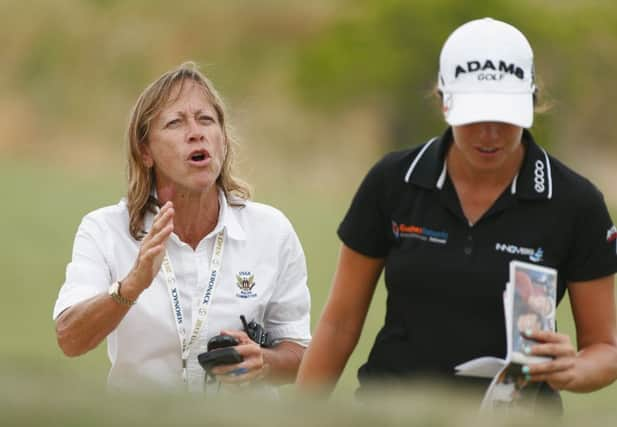Martin Dempster: 9-holes may offer survival route


As fellow Borderers – he’s a Melrose man and I hail from Coldingham – we got talking about how so many of the nine-hole courses in that region had become 18-holers over the years.
It stemmed from us chatting about golf’s participation problems and we were both of the same opinion, that perhaps some of those venues probably wished they had stayed as they were.
Advertisement
Hide AdAdvertisement
Hide AdNot just in the Borders, I hasten to add. Whereas once there was an abundance of nine-hole courses scattered around the home of golf, they now appear to be few and far between.
Don’t get me wrong. The vast majority of golfers want to play 18 holes whenever they can and long may that continue. If time constraints are the game’s biggest problem, however, then options have to be made available.
It is no surprise at all that the R&A’s pace of play survey has identified work and family commitments as the biggest factors preventing people from playing golf around the world. As round times have crept up – and there is no doubt that has happened with the introduction of pre-shot routines and fussing about with those dreaded distance-measuring devices – the sport has become less appealing with each passing year, especially to the younger generation.
I’m not in the camp that believes senior golfers have become the game’s Achilles heel due to them getting the best deal by playing the most for a lower subscription than your general member. Without them, courses and clubhouses would be empty far too often and we certainly don’t want that, especially in the game’s cradle. We do, however, need to be coming up with an alternative for those golfers who can’t afford to spend four or five hours away from the bosom of their family, particularly at the weekend.
Clubs themselves should be coming up with more nine-hole competitions or, if possible, build nine-hole facilities like the one at the Paul Lawrie Golf Centre on the outskirts of Aberdeen or Kingsfield near Linlithgow.
The R&A’s “Golf around the world 2015” report released earlier this year highlighted a staggering number of nine-hole courses being built around Europe, yet few, if any, are probably in the pipeline in the British Isles. Perhaps it is time for some of the existing 18-hole layouts to take the bull by the horns and revert to being nine-holers. Sure, that would be a difficult decision to make. It would help reduce costs, though, and that factor alone might be the route to long-term survival.
As for trying to shave a few minutes off the time it takes to play 18 holes – and that effort certainly has to be made – then the respondents to the R&A’s pace of play survey are bang on. Poor etiquette, player pre-shot routines and bad play are the main contributing factors.
Based on my own efforts over the past couple of years, I’ve been guilty of the latter, but I will never allow myself to have any finger of blame pointed at me for either of the other two and, thankfully, I know that I am not alone in that respect.
Advertisement
Hide AdAdvertisement
Hide AdMore and more, however, poor etiquette is creeping into the game, as, sadly, is the sight of club golfers going through pre-shot routines that are completely unnecessary and need to be stopped for the game’s future health.
While definitely becoming more expensive, it was encouraging to see that cost did not figure too prominently in those reasons listed for preventing people from playing the Royal & Ancient game. Just seven per cent for the cost of play and one per cent for the cost of equipment is probably a lot less than comparable figures for football, for instance.
The respondents to a welcome survey have provided food for thought for the R&A and let’s hope it results in meaningful steps being taken. As far as tournament play is concerned, the professionals have to “lead by example”. Unfortunately, a number at the moment are leading badly and it is criminal that they are allowed to get away with it. It is pointless putting them on the clock, seeing them speed up for a bit then become snails again once the referee has moved on.
St Andrews, unfortunately, is not the best of Open venues to try to speed things up due to the nature of the Old Course with its double greens. This summer’s Claret Jug joust would, however, be the perfect time for the R&A to send out its own message on pace of play before discussing the findings of club golfers around the world later in the year.